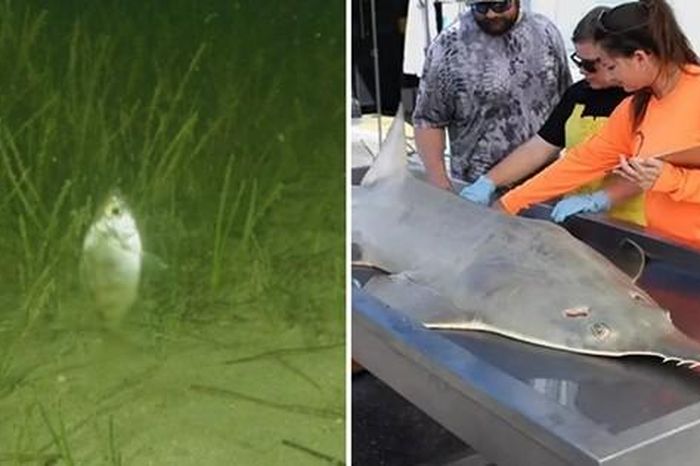Discovering the world's deepest blue hole
Taam Ja', the world's second deepest blue hole (cenote), located in Chetumal Bay in Mexico, was discovered in 2021 and has just regained its position as the world's deepest blue hole.
Previously, the underwater depth of Taam Ja' located in the Gulf of Chetumal in Mexico was estimated to be 274 meters.

In December 2023, an oceanographic expedition conducted exploration into the center of Taam Ja'. Group of conductivity, temperature and depth (CTD) meters to measure the evolution of various physical parameters such as temperature, pressure and thermoelectric conductivity.
However, when the probe reached minus 274 meters below the surface, scientists realized that the bottom of the hole was still far away. The measuring device continued to be taken to a depth of 420 meters. And once again, scientists were surprised because the probe was limited by its own operating depth, not because it had reached the bottom.
This means that Taam Ja''s maximum depth is unknown and it is now certainly the world's deepest blue hole (so far).
During recent discoveries, scientists also discovered that Taam Ja' is connected to the ocean through a tunnel system.
In fact, cenotes (natural holes) of this type, due to their isolation, often have temperature and salinity conditions that are very different from the rest of the ocean environment. However, at a depth of more than 400 meters of Taam Ja', scientists found that its environmental conditions matched those of the ocean, suggesting a connection to the open ocean.
You should read it
- Discover the most bizarre black holes in the mysterious space universe
- Instructions to fix blue screen error on computer
- Discover a monster black hole 100,000 times bigger than the Sun, the second largest in the Milky Way
- Videos and photos about Windows Blue
- 10 interesting facts about black holes in the universe (Part 2)
- Explore Glory Hole, a man-made 'monster' hole
 100,000 billion cicadas came to life at the same time in the US after a total solar eclipse
100,000 billion cicadas came to life at the same time in the US after a total solar eclipse The 'stupidest' animal in the world, IQ is so low that it is about to become extinct, experts 'tried their best'
The 'stupidest' animal in the world, IQ is so low that it is about to become extinct, experts 'tried their best' Cave tourism promotes conservation of underground heritage in India
Cave tourism promotes conservation of underground heritage in India 'Brain-eating monster' is less than 20cm long and eats 3,000 mice every year?
'Brain-eating monster' is less than 20cm long and eats 3,000 mice every year? Many fish species have strange behavior, rotating themselves like a tornado: What do they signal?
Many fish species have strange behavior, rotating themselves like a tornado: What do they signal? Trees also know how to cry in pain when their flowers are cut off from their branches
Trees also know how to cry in pain when their flowers are cut off from their branches